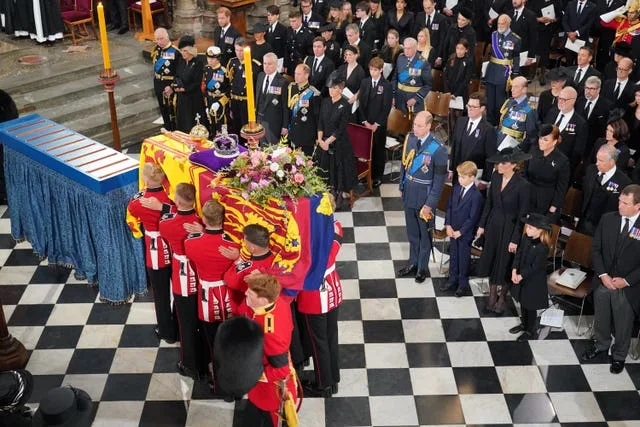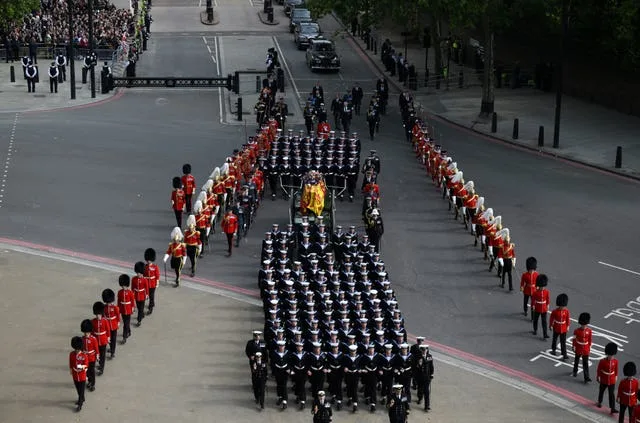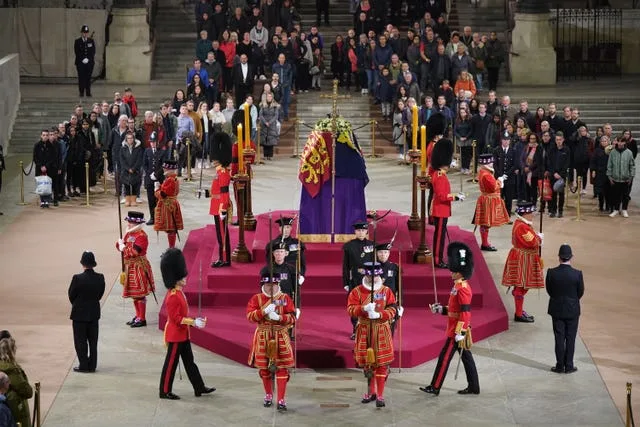Critics argue that the lavish spending is insensitive amid the ongoing cost of living crisis.
The public expenditure for the commemorative events following the passing of Queen Elizabeth II last year was estimated at £161.7m by the Treasury.
After her demise on September 8th, a 10-day period of national mourning was declared, culminating in the monarch’s funeral. The lying in state was attended by approximately 250,000 individuals, and official viewership data indicated that over 29 million people in the UK watched the funeral broadcast on television.
Critics argued that the grandeur of the occasion was unsuitable given the current struggles of many individuals with basic necessities.
Graham Smith, the CEO of Republic, stated, “The assumption that these events must be conducted on such a grand scale needs to be challenged, particularly during a time of cost of living crisis.”
Government ministers have defended the scale of the commemorations, emphasizing the national significance of the event. However, Graham Smith countered their argument by stating that individuals struggling to afford basic necessities would likely benefit more from a hot meal than from the pomp and circumstance surrounding the queen’s funeral.
Various events took place throughout the United Kingdom, and Chief Secretary to the Treasury, John Glen, provided a written statement to parliament outlining the estimated cost of £161.7m.

The Home Office was the highest spender, with an expenditure of £73.7m, followed by the Department for Culture, Media and Sport at £57.4m, and the Scottish government with costs totaling £18.8m. Glen provided a breakdown of the costs incurred by each department.
- Department for Culture, Media and Sport: £57.4m
- Department for Transport: £2.6m
- Foreign, Commonwealth and Development Office: £2.1m
- Home Office: £73.7m
- Ministry of Defence: £2.9m
- Northern Ireland Office: £2.1m
- Scottish government: £18.8m
- Welsh government: £2.2m
Glen clarified that the costs mentioned only encompassed expenses directly related to the events themselves, excluding expenses that would have been incurred regardless.
He further explained that the Treasury covered certain costs and fully reimbursed the Scottish government, Welsh government, and Northern Ireland Office, who, in turn, repaid their respective partners who had incurred costs.
According to Downing Street, the funds were used to ensure the smooth execution of the event and guarantee the safety of mourners from the UK and around the world. A spokesperson from Number 10 stated that given the significant international nature of the event, it was crucial to enable people to pay their respects.
Glen emphasized the immense national importance of the events, highlighting the substantial turnout of hundreds of thousands of individuals who personally paid their respects at locations such as Edinburgh and Westminster during the lying in state, as well as in London and Windsor during the state funeral on September 19th. Additionally, many more individuals showed their support for the King and other members of the royal family as they traveled throughout the UK during that time.

The government’s foremost priorities were to ensure the smooth and dignified execution of these events, while simultaneously prioritizing the safety and security of the public.
According to FactCheck, after adjusting for inflation, recent decades witnessed the most expensive state events, including the funerals of Princess Diana and the queen mother, as well as the wedding of the Duke and Duchess of Cambridge. These events incurred costs ranging from £7m to £8.4m each. Margaret Thatcher’s funeral, in today’s prices, amounted to approximately £3.8m, while Winston Churchill’s funeral was estimated to be closer to £1m.

During the period, officials described the logistical challenges of these commemorations as equivalent to organizing numerous state visits simultaneously. The Foreign Office allocated hundreds of staff members to tackle the task, with the intricate combination of security, diplomacy, protocol, and logistics representing one of the most extensive short-term planning endeavors faced by the diplomatic service since Churchill’s funeral.
SOURCE: THE GUARDIAN


